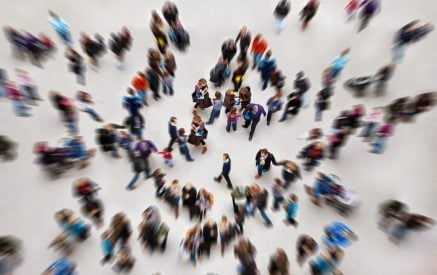Why do people display malignant aggression?
Everywhere, in everyday life, on and outside of the Internet, we can notice manifestations of aggressive behavior, sometimes reaching sadism. This is perhaps a common occurrence, and I cannot confidently assert that it has become more intense in the last decade, simply, the Internet provides the opportunity to more closely follow this process. The aggression in Armenia is displayed against political opponents, Turks, Russians, Americans, Europeans and other minorities. Apparently, this list does not significantly differ in other countries.
Aggression, according to psychologists, can be benign and malignant. The first one is typical to all living things, and if we describe in short, it is a defense reactions in the case of true challenges. But no animal would ever think to cause physical or mental suffering to others without any rational grounds but just for pleasure. Here is the malignant aggression that we face globally, as well as in the national-state circles, including the work place and family.
German psychologist Erich Fromm sees the roots of aggression is the dilemma which every person encounters after leaving his mother’s womb. He has two ways, either to choose a free and creative individual’s path, during which his intelligence and the ability to love is developing, or vice versa, try to return to a cozy place to enter into a symbiosis and merging with something or someone. And in the case of symbiosis, the choice is not so great, either to rule or to subjugate. Or, to rule over a part of the natural subjects and to subject the other one. Sadism and masochism are the extreme manifestations of the model “to rule-subjugate”.
Read also
In fact, loving your near and dear, moreover, the neighbors is “risky”; it may be viewed as a sign of weakness, you may not be understood, your feelings cannot be mutual and so on. Manifestation of aggression is safer: to “insure” me, let me speak wrongly and think wrong about this-or-that person, search for his demerits, accuse and punish him and so on. I be, as people say, a donkey or a saddle. In the case of ruling, I will despise and punish whomever I want at my discretion, in the case of subjugating, I will suffer and complain. In the second case, there are numerous options for “revenging”: dogs, cats, children, parents, spouses – those who are under “my hand”. The Internet in this sense is an ideal place: the responsibility – zero, the opportunities of scourging, slamming and offending – unlimited. People’s psychological defects and complexes of inferiority are best displayed here. That’s why I think that we can measure the aggression level of the society through the Internet.
The bureaucratic system creates vast opportunity for sadism and, accordingly, masochism. If the official is not even corrupt (which, agree, does not often happen in Armenia), he in all probability tends saying “no” to the citizen and taking him back and forth for 20 times just because he has small or big power and is self-establishment through it. The same trap creates the “ideologies” that give final answers to all questions. If, for example, it is decided once and for all that the representative of this-or-that nation or a religion is your “age-old rival,” then you are “protected” from this side from exerting intellectual efforts, you can easily display your aggression over this “unwanted” group.
The outcome is very simple: to give up the illusion that something constantly intimidates you, give up the mania of having power, money, slaves and subjects and be concentrated on being someone, in other words, on presenting what sort of person you are. Certainly, this outcome seems to be simple only at first glance.
Aram ABRAHAMYAN





























































